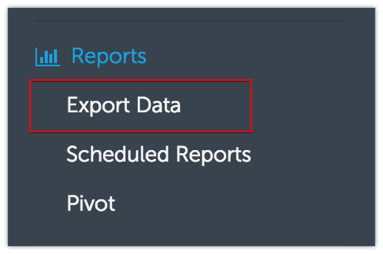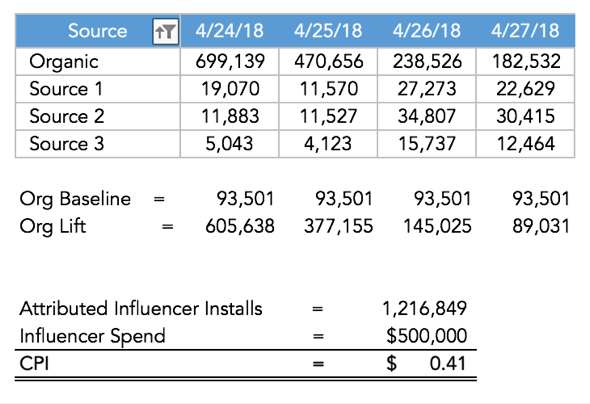Mike Phu is the Director of Growth at GOAT where he leads the growth team to execute on all mobile user acquisition and retention strategies. GOAT is the largest sneaker marketplace to buy and sell sneakers. One aspect of Mike’s marketing mix is influencer marketing where focus is placed on influential people—for example athletes and rappers—rather than the target market as a whole. Learn more about Mike from his Mobile Hero profile.
Influencer Marketing – Branding or Direct Response?
Mobile marketers are very familiar and comfortable with acquiring new users through channels like Facebook and Google. You pay for an install and can track whether that install will generate revenue for your business. There is little friction between the advertisement and the install, which is why these channels belong in direct response marketing.
Influencer marketing, on the other hand, can be both brand and direct response marketing – based on the marketer’s KPIs. The good news is if the influencer did not perform well for acquiring new users, your fallback metric is added brand value such as impressions and clicks. The bad news is influencer marketing has become so successful (and expensive) as an acquisition channel that marketers must now value influencers like a direct response channel.
Although you can’t fully track influencer marketing at the user level, we’ve all seen the positive effects influencer marketing can have on the top of funnel metrics. Whether it be a spike in web traffic or a spike in app installs, there are clear acquisition KPIs that influencer marketing is driving where mobile marketers are willing to spend more and more in this market.
Making A Highly-Educated Guess
Before we get into the details I want to make one thing clear about attributing installs to influencer marketing efforts (and other non-trackable channels) – it’s purely directional and impossible to get 100% accurate. Even attributing direct response channels is not 100% accurate and is why marketers also measure on blended organic/paid metrics.
The goal of this attribution model is to create a formula that makes a highly-educated guess for the number of installs brought in by influencer marketing. The formula’s goal is to determine a baseline metric of expected daily installs and measure the incremental lift in daily installs during the time the influencer posted. In its simplest form, here’s how the formula would function:
Attributed Influencer Installs = Daily Organic Installs (Actual) - Daily Organic Baseline (Expected)
Not as complicated as you’d expect, right? The actual model is much more complicated as it is part of a multi-touch attribution, but I wanted to keep this article simple by focusing on just influencer attribution. So, with this formula, all you’d have to do is find out two things: how many organic installs does your company typically receive (expected), and how many daily organic installs occurred on the day the influencer posted about your brand (actual).
Finding Your Organic Baseline
An organic baseline is the number of organic installs you’d expect to receive in a day. Classic marketing attribution theory aims to understand a “base” value that is not influenced by marketing, so marketers could measure the true effectiveness of their marketing efforts. Getting this baseline metric is relatively simple to do (impossible to get 100% accurate) and will require the use of an MMP (mobile measurement partner) to get the data.
Using your MMP (I’ll use Appsflyer in this example), you’ll want to pull daily installs by source.

You can get more granular with your analysis by measuring lift by geo and devices, but we’ll keep it simple and look at everything as an aggregate.

If using Appsflyer, you will need to pull data for both iOS and Android as these two are separate dashboards. Ideally, you’d want to find the baseline off your most recent install data. In this example, I’m using about three weeks of data.
Export your data and combine the two device datasets into one excel sheet. The next step is to create a pivot table. You technically don’t have to pivot the table, but I like seeing the data in this format so I can visualize the organic baseline across dates. Pivot the data in the following format:
- Columns: install_date
- Rows: source
- Values: installs (sum)

Next, use the excel function MEDIAN on the entire row of organic installs. Median is similar to an average in a dataset, but instead sorts the value in ascending order and takes the middle value. Median is preferred over average because it better accounts for data anomalies. In this example, the median daily organic installs for 4/1 – 4/20 is 93,501.

Keep Your Data Clean
The key to accurately measuring organic lift is to keep the data clean by not making any major changes that could move the daily organic installs away from the baseline number you calculated. You want to keep that number consistent so any lift in the organic installs can be attributed to the influencer, so put your media buying on cruise control and any off-line marketing to a halt.
I’d recommend keeping the data clean for three days prior to the influencer’s post and 2-3 days after. Having a few days of clean data before the influencer post date allows the halo effect of other efforts to cool off to the expected organic level.
Post Analysis
If you’ve done influencer marketing before, you’ll be familiar with the spike in installs the day an influencer posts and it tapering off a few days later. Measuring success is then based on the incremental installs of the spike compared to the days prior, which is the basis of lift analysis. My approach is to create a process for measuring influencer marketing so scale can happen without being held back by data analysis.
To complete the formula and calculate the attributed influencer installs, we return to our trusted MMP again to pull the same dataset that includes at least three days after the influencer’s post date. You can use the same excel file and replace the raw dataset sheet with the updated data. Make sure to change your data source to include the new rows of data and hit refresh.
In this example, the influencer posted on 4/24/18, so the next step is to calculate the incremental organic installs starting from the post date + three days out.
Starting on the influencer’s post date and ending three days after, create a row for the baseline organic installs. In the row below it, take the difference of organic installs and the baseline install.

Calculate the CPI
Now that the hard work is done, calculating your CPI is simply:
Influencer CPI = Cost for Influencer’s Post / sum(Attributed Influencer Installs)
Assuming no other internal or external marketing efforts happened during this timeframe, the sum of incremental installs from these days are highly correlated to the efforts of your influencer. In the final step, take the sum of attributed installs and divide by the money spent on the influencer to get the CPI for that influencer. Side note: this is dummy data, so your results may vary.

Setting Expectations
Not all influencer marketing efforts will generate the same expected outcomes. The demographics of followers, follower/subscriber count, and content of the post are all factors that will affect performance. We also have to consider that having 6 days of clean data may not be feasible and influencers will need to compete with other marketing efforts. Attributing installs and calculating CPI with concurrent marketing efforts will require a multi-touch attribution model, which is complex and outside the scope of this analysis.
The key takeaway of this analysis is that it doesn’t have to apply to just influencer marketing. Marketers can apply the same lift analysis to other indirect attribution efforts, such as podcast advertising, and manage their marketing efforts more effectively. For now, I hope this helps marketers better answer the question, “how do you attribute installs to influencer marketing?”
